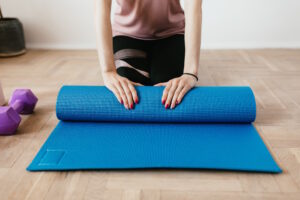
Pilates is a highly effective exercise method that offers a multitude of benefits, including improved strength, flexibility, and posture. With its emphasis on core engagement, controlled movements, and mind-body connection, Pilates provides a comprehensive approach to enhancing physical fitness and overall well-being. In this article, we explore how Pilates can improve posture and flexibility, the benefits of Pilates for strength, the role of Pilates in improving posture, and the importance of flexibility in the Pilates practice.
How does Pilates improve posture and flexibility?
Pilates is renowned for its ability to improve posture and flexibility. By targeting the deep stabilizing muscles, particularly those of the core, Pilates helps to strengthen and align the body, leading to improved posture. The exercises in Pilates emphasize proper alignment and encourage the activation of postural muscles, such as the abdominals, back extensors, and shoulder stabilizers. Over time, this strengthens the muscles responsible for maintaining good posture and reduces imbalances that can contribute to poor alignment.
In terms of flexibility, Pilates incorporates a wide range of exercises that promote elongation, stretching, and mobility of the muscles and joints. Dynamic and static stretching techniques are integrated into the practice, allowing for increased range of motion and improved flexibility. The controlled and intentional movements in Pilates facilitate gentle stretching while maintaining stability, helping to enhance flexibility without compromising joint stability.
What are the benefits of Pilates and strength?
Pilates is a highly effective method for improving strength. The exercises in Pilates focus on engaging multiple muscle groups simultaneously, resulting in balanced muscle development throughout the body. The core, including the deep abdominal muscles and back muscles, is a primary focus in Pilates, leading to increased core strength and stability. A strong core provides a solid foundation for movement and can improve overall functional strength.
Additionally, Pilates incorporates resistance training using various equipment such as reformers, resistance bands, and weights, which adds an element of resistance to the exercises, further challenging and strengthening the muscles. Regular Pilates practice can lead to increased muscular strength and endurance, benefiting not only daily activities but also enhancing performance in other physical activities or sports.
Does Pilates help improve posture?
Yes, Pilates is highly effective in improving posture. The emphasis on core engagement and proper alignment in Pilates helps to correct postural imbalances and promotes optimal alignment of the spine and joints. Through the activation of the deep stabilizing muscles, Pilates strengthens the muscles responsible for supporting the spine and maintaining good posture, such as the abdominal and back muscles.
Additionally, Pilates encourages body awareness and mindfulness, allowing practitioners to develop a better understanding of their postural habits and make conscious adjustments to improve alignment. With consistent Pilates practice, individuals can experience improved posture, reduced muscular imbalances, and enhanced body alignment, both during exercise and in everyday life.
Why is flexibility important in Pilates?
Flexibility plays a crucial role in the Pilates practice. A good range of motion and flexibility in the muscles and joints allow for smooth and fluid movement during Pilates exercises. Flexibility helps to prevent stiffness, muscle imbalances, and joint restrictions, reducing the risk of injuries. It also allows for greater ease and effectiveness in performing Pilates movements, enabling practitioners to achieve optimal alignment and engage muscles fully. Moreover, improved flexibility contributes to overall functional movement, enhances body awareness, and promotes relaxation and ease of movement in daily activities.
Pilates offers numerous benefits, including improved strength, flexibility, and posture. By targeting the core muscles, Pilates enhances core strength, stability, and alignment, leading to improved posture. The method incorporates stretching and mobility exercises to promote flexibility and range of motion in the muscles and joints. Pilates also improves overall strength by engaging multiple muscle groups simultaneously and incorporating resistance training. Flexibility is crucial in Pilates as it allows for smooth and fluid movement, reduces the risk of injuries, and enhances body awareness. With its comprehensive approach, Pilates provides a holistic way to improve physical fitness and achieve optimal strength, flexibility, and posture.